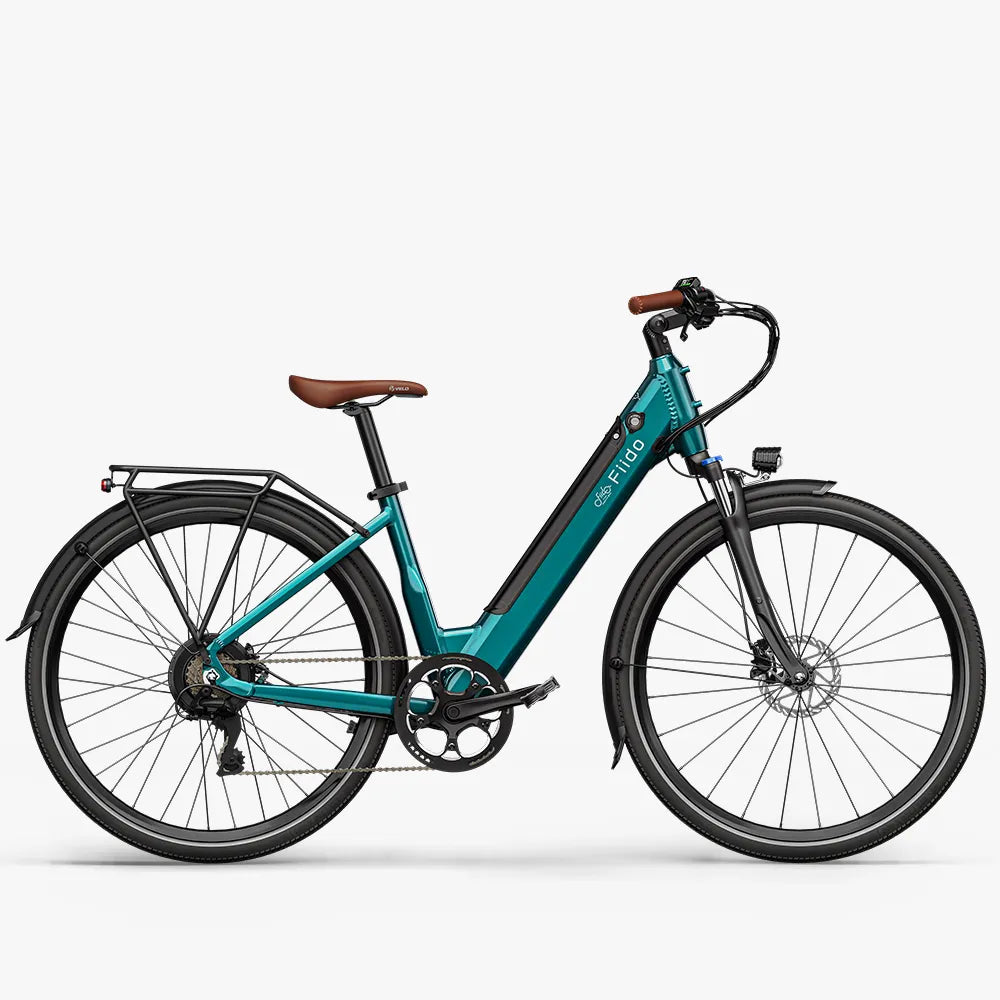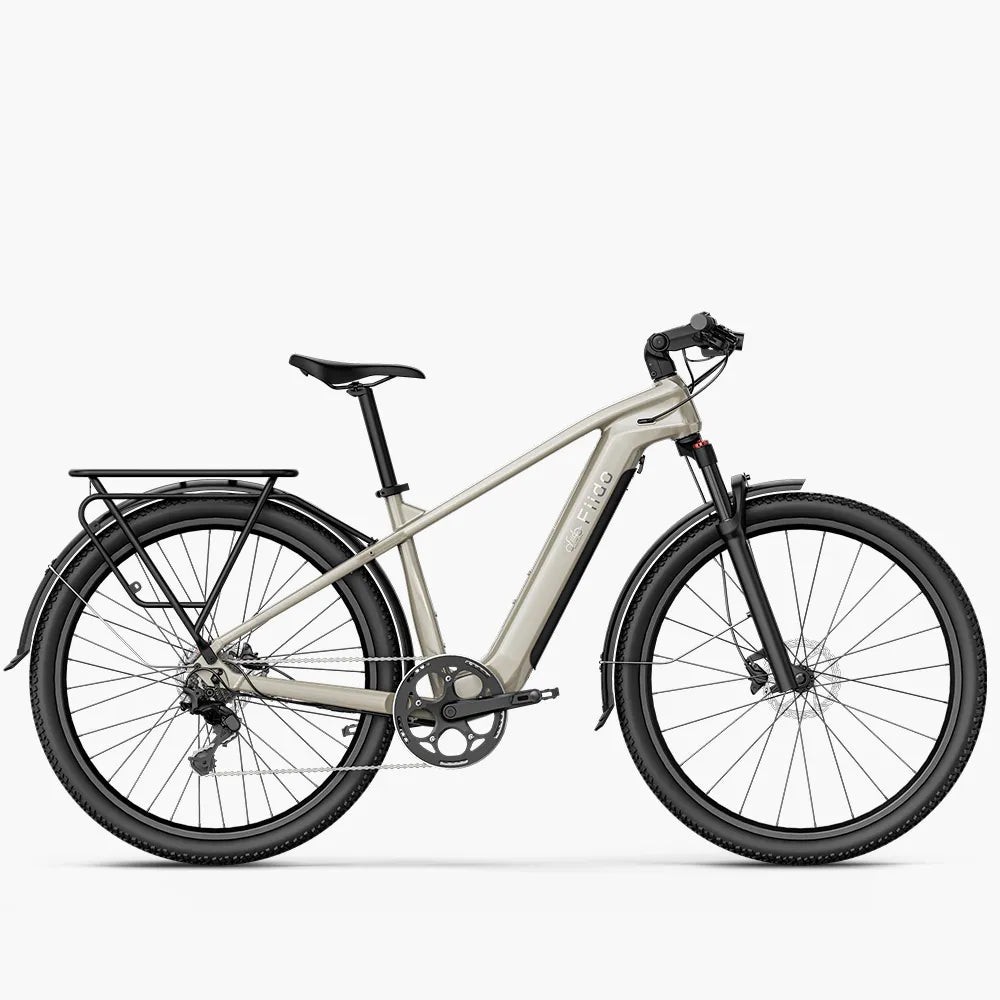When you're just starting to choose an electric bike, you might not yet know whether you'll mostly ride on city streets or occasionally venture out for some countryside adventures. You might not fully understand battery specs or even what “assist modes” mean. At this stage, what you really need is an easy-to-use, versatile e-bike with straightforward controls—like a few well-fitting, go-to pieces of clothing that don't require complicated styling but help you confidently get through each day and take that first step with ease.

First, Understand Your Local E-Bike Laws and Regulations
-
It must have pedals that can be used to propel the bike.
-
It can have more than two wheels, such as in the case of electric tricycles.
-
It may include a throttle that can propel the bike without pedaling up to 15.5 mph, but only if the model has been “type-approved”for this functionality.
-
Have a continuous rated power output of no more than 250 watts.
-
Stop providing assistance once the bike exceeds 15.5 mph (25 km/h).
Choosing the Right Electric Bike Frame Size

When buying an electric bike, besides considering the type and features, don't overlook the crucial factor of selecting the correct frame size. The right size directly affects your riding comfort, handling, and safety. Generally speaking:
--Height under 1.5 meters (4'11”) — small frame (about 14–16 inches)
--Height between 1.6 and 1.75 meters (5'3”–5'9”) — medium frame (about 17–19 inches)
--Height above 1.75 meters (5'9”) — large frame (20 inches and up)
Tip: A 14-inch frame (1 inch ≈ 2.54 cm) usually refers to the vertical distance from the center of the pedals to the point where the frame meets the seat post.
If you ride mainly for leisure or commuting, a slightly smaller frame offers easier handling and a more upright, comfortable posture. For sport or long-distance riding, a larger frame allows a more extended position and better pedaling efficiency—provided you have enough flexibility and core strength.
It's recommended to test ride before purchasing and refer to the brand's sizing chart. During a test ride, check if your feet can comfortably reach the ground when seated, if your knees bend naturally while pedaling, and if your posture isn't leaning too far forward. This will help you find the frame size that fits you best.
5 Key Specifications to Consider for Electric Bikes

Understanding the key parameters of an electric bike will help you make an informed choice based on your needs:
Suspension System: The suspension mainly includes front fork suspension and rear suspension, which absorb shocks from the road.
1.No suspension: Both the frame and front fork lack shock absorbers. This is suitable for smooth, paved city roads. These bikes tend to be lighter, simpler in structure, and cheaper to maintain, but riding on rough or uneven surfaces can be bumpy and less comfortable.
2.Front fork suspension: Installed on the front hydraulic suspension fork, it effectively absorbs small bumps on the road, suitable for typical urban riding and light off-road use, improving front wheel impact absorption.
3.Full suspension (front and rear): Equipped with both front and rear shock absorbers, ideal for complex terrains and mountain biking. It significantly improves ride stability and comfort, reducing fatigue during long rides.
Motor Power: The motor's power directly affects acceleration, hill-climbing ability, and top speed.
Torque: Higher torque means stronger hill-climbing and acceleration. Motors with torque below 20Nm are best for flat roads, 20–40Nm for moderate hills, and above 40Nm make climbing easier.
Motor type: Brushless motors are durable, quiet, and efficient, with power typically ranging from 250W to 750W. 250W motors suit city commuting and flat terrain, complying with European regulations; 500W or higher are better for hills and off-road riding, offering stronger power.
Motor position: The motor's position not only affects the bike's overall balance but also changes your riding experience. Different motor positions have distinct characteristics: a mid-drive motor is installed at the crank axle, providing natural assistance and better handling, making it the preferred choice for high-end models; hub motors are more common on city commuter bikes, offering direct thrust and strong acceleration, with simpler maintenance.
Battery Range : Battery capacity typically ranges from 300 to 700Wh, with a theoretical range of about 30 to 100 kilometers. However, actual range is affected by various factors such as riding speed, terrain, rider weight, and assist mode used. Most Fiido electric bikes offer a stable range of 50 to 100 kilometers or more, and some models support a triple battery module system that can extend the maximum range to over 200 kilometers, greatly enhancing flexibility and peace of mind for long-distance rides.
Gear System : Electric bikes with multiple gears usually feature 7-speed or 21-speed options, making it easier to tackle different slopes and improving riding efficiency. Multiple gears allow you to adjust cadence and effort based on road conditions, which is especially useful for hilly or varied terrain. On the other hand, single-speed e-bikes often use belt drives with no gear shifts, offering a simpler structure and less maintenance, ideal for flat roads and light riding. Which e-bike drivetrain to choose depends on your riding environment and needs—multi-gear bikes are better for hilly areas, while single-speed e-bikes are more practical and hassle-free for urban flat commutes.
Assist Modes Electric bikes generally offer three assist levels, each providing a different riding experience:

Low (Eco mode): Provides light assistance, relying more on your own pedaling power. The ride feels natural and effortless, suitable for flat roads and long-distance trips, and helps extend battery life.
Medium (Normal mode): Offers moderate assistance with noticeable motor support, making pedaling easier and more comfortable. Ideal for daily commuting and varied road conditions.
High (Sport mode): Delivers strong assistance, making pedaling very easy, perfect for climbing hills or quick acceleration. However, it consumes more battery power, resulting in shorter range.
How to Prepare Extra Electric Bike Accessories
Spare or Extended Battery: Ideal for long-distance rides to avoid range anxiety.
Phone Mount: Keeps your hands free for navigation, especially useful for city commuting.
Charger and Adapters: It’s best to carry them with you; make sure they are compatible with local plug types.
Folding Lock / U-Lock: Essential for theft protection. Choose locks with high anti-theft ratings to keep your e-bike secure.
Waterproof Bag or Riding Backpack: Useful for carrying rain gear, tools, laptops, and more—convenient for daily commutes.
Rear Rack / Cargo Rack / Basket: Makes carrying items or daily shopping easier, but be sure to check if your e-bike has the appropriate mounting points to ensure compatibility.
Fiido Electric Bikes Worth Considering for Beginners
Fiido C11 Pro This city-style lightweight electric bike features a simple design, perfect for beginners'daily commuting and urban riding. It has a relatively light frame, equipped with comfortable front oil spring suspension and hydraulic disc brakes to ensure a smooth and safe ride. The 7-speed gear system makes it easy to handle different slopes in the city, with a range of over 100 km—ideal for everyday needs of new riders.
Fiido C11 Pro City E-bike
Trusted by 10000+ riders, Fiido C11 is now even better.
Reminder: Prices are subject to the product detail page ,some earlier card details may have been updated.
Fiido Nomads Positioned as a touring e-bike, this model suits beginners who enjoy weekend adventures or long-distance rides. It comes with a front hydraulic suspension fork with a long travel of 120mm and powerful hydraulic disc brakes, effectively handling rough terrains. The 9-speed gear system and torque sensor provide more precise assist control. With a range of about 79 km, it's perfect for beginners who demand higher comfort and versatility in their rides.
Fiido Nomads Touring E-bike
Long-range electric touring bike for comfortable, all-terrain travel and city exploration.
Start Your Riding Journey
When choosing an electric bike as a beginner, the most important thing is to find a model that is practical and suits your lifestyle, helping you easily start your green commute. Begin with a basic city commuter bike, then add features that fit your riding habits, such as a folding design or more powerful motor. You don't need to buy the most expensive or fully loaded bike right away—just a few key functions to make your ride more comfortable and boost your confidence. Give yourself time to adapt and explore, find the bike that truly fits you, and start your new riding life.
FAQ
Q1: Do I need a driver’s license to ride an electric bike?
In most U.S. states, you do not need a driver’s license to ride a Class 1 or Class 2 electric bike. However, Class 3 e-bikes may have age restrictions, helmet requirements, or local licensing rules—so it's best to check your state’s regulations.
Q2: How long does an electric bike battery last? Typically, the battery life is 3-5 years, depending on usage and maintenance.
Q3: How long does it take to charge an electric bike? Usually, it takes 4-6 hours to fully charge. Some models support fast charging and can be charged in under 3 hours, such as the Fiido C21 gravel electric bike.


















